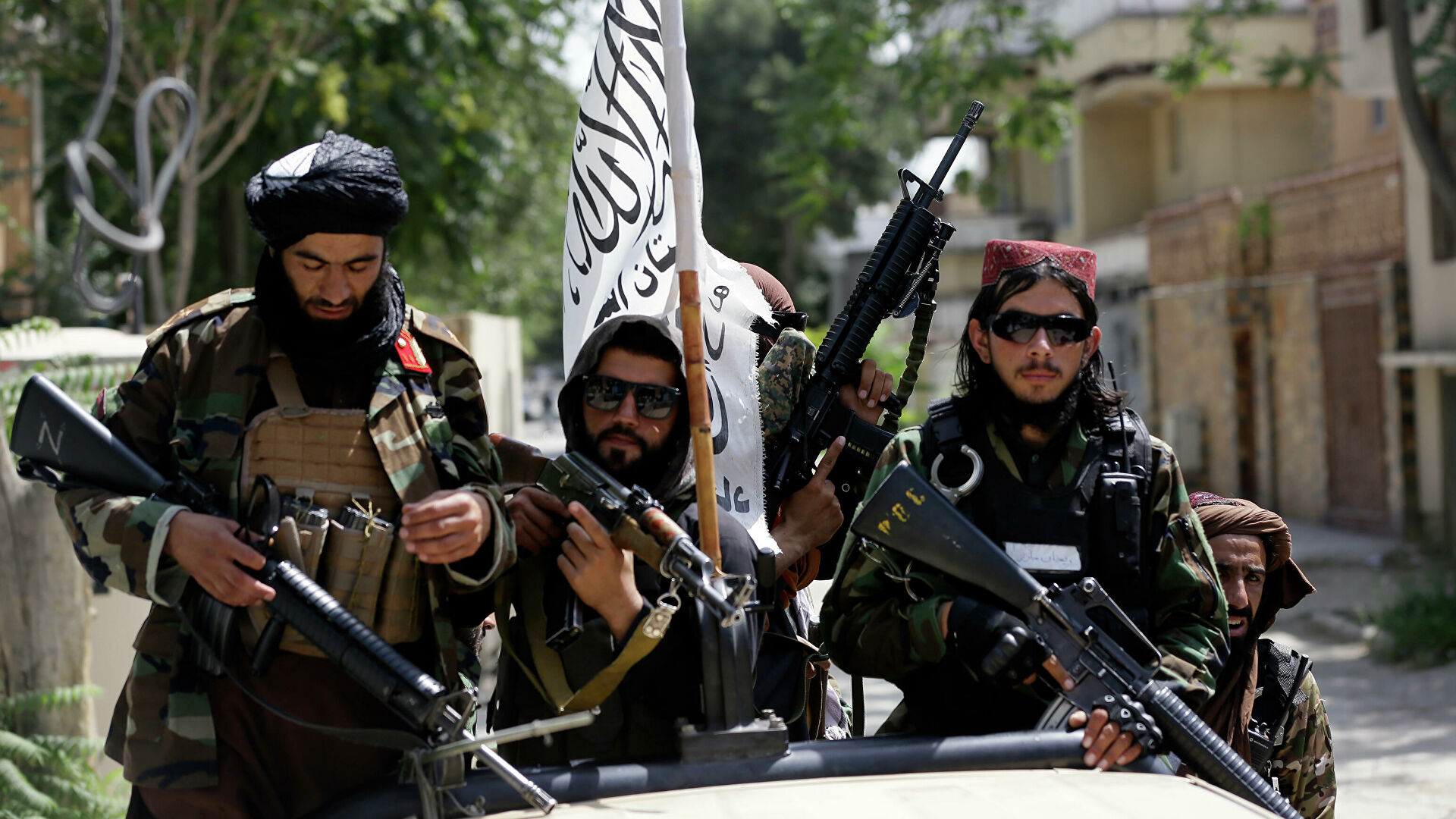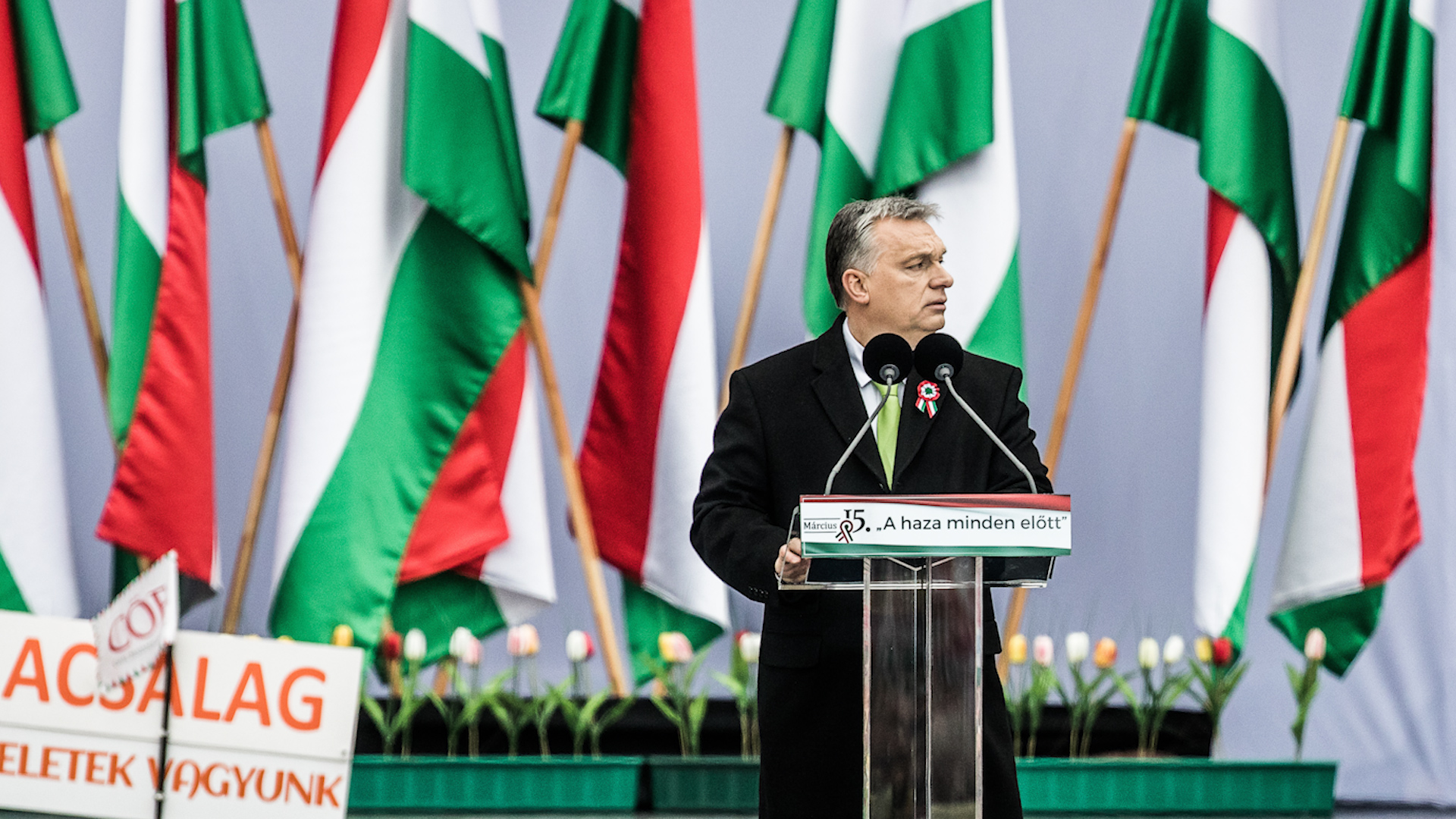ABSTRACT
Eastern Europe has conducted an economically and politically communist program under the hegemony of the USSR since World War II. However, this socialist program was successful until the 1980s due to the outbreak of Neoliberalism. In the 1990s, eastern Europe, isolated by the collapse of the USSR, began to integrate into the European Union as part of its fifth enlargement. As a result of this integration, Eastern Europe has made progress in many areas politically and economically. The aim of this article is to examine the process of economic development and democratization because of the integration of Eastern Europe into the European Union.
Keywords: Democratization, Economic Development, Development, Eastern Europe, European Union.
INTRODUCTION
Throughout history, the West has made more progress in every field than the rest of the world. One of the biggest factors in this progress is democracy. Democracy: it is a form of governance in which the rulers determine the rulers, political control is in the hands of the rulers and these administrations are considered politically, socially and economically equal. The history of democracy dates to Ancient Greece, about 2,500 years ago. However, Europe, which adopted the philosophy of scholastic thinking in the Middle Ages, carried out religious and state affairs together and the church became a political authority. However, Europe has undergone a political, economic and social transformation since the 15th-16th century under the influence of the Renaissance, reform and especially the French Revolution. Because during this period, the bourgeoisie emerged due to the institutionalization of economic liberalism. In the 1780s, this segment of Europe’s middle class made several demands. Thus, with the development of the bourgeoisie, civil society emerged. Another must-have for democracy in the modern world is political parties. Political parties try to come to power in line with their ideology, ideas and programs. However, in some democratic countries, parties that cannot govern alone form a coalition government with other rival parties and take over the state. However, these political parties, which deal with different programs, need to work in harmony. Another factor in democracy is the market economy. The market economy assumes human nature as competitive. Therefore, it provides economic freedom. This economic liberation and competition ensure economic development and political stability. According to Max Weber, capitalist industrialization is at the heart of modern democracies. Because developed states tend towards democracy more. Similarly, according to R. Dahl, countries that adopt modern democracy are more likely to prosper by developing faster than modern democratic countries with market economies. Because education is encouraged in these democratic countries, the laws are stronger and private property is guaranteed due to liberal policies, politicians cannot arbitrarily interfere with the economy. As a result of all this, economic development and democratization interact with each other. In addition, according to Lipset, the increase in wealth and education reduces dependence on fixed ideologies, preventing extreme trends in countries. Thus, wealth and education improve democracy. The increase in education and wealth reveals a middle class. This middle class is more oriented towards moderate and democratic parties than extreme parties. However, there are also theorists who negatively establish the relationship between these two correlations. For example, Alain Touraine (2004) found that enrichment is not a factor that triggers democracy. Because growth has the potential to increase income inequality. On the other hand, according to Zakaria’s study, there are also countries with high GDP and undemocratic countries. These are countries in the Middle East or North Africa that are rich in natural resources. The high natural resources make political modernization and economic development difficult. While countries such as the East Asian Tigers (South Korea, Taiwan, Singapore, Hong Kong) with no natural resources are developing rapidly, development has not been seen to be rapid in countries with natural resources. In these countries, which are cursed by resources, even if the gross domestic product (GDP) increases due to the availability of these natural resources, political institutions, laws, and bureaucracy have not developed sufficiently. These countries are the states that make a living selling their natural resources, which are referred to in the literature as the “rentier state” (Akıncı, 2015: 44-48).
According to the analysis of Robert J. Barro (1996), the relationship between democracy and economic growth is not linear. According to the study, the variables that positively affect growth are the rule of law, liberal economic understanding, and high human capital. However, when these variables and the level of real GDP per capita are kept constant, the overall impact of democracy on growth is observed to a slight degree negative. Because according to Barro’s study, it has been observed that democracy increases growth in countries with low levels of political freedom but suppresses growth in countries with a moderate level of freedom. In the study conducted by MIT Professor Daron Acemoglu (2008), when the relationship between democracy and economic growth was examined, it was determined that the level of democracy had no causal effect on economic growth. As a result, if we consider the relationship between economic growth and democracy, a total of 3 opinions will emerge:
- Democratic governments record economic growth compared to authoritarian governments.
- Authoritarian governments can contribute more to economic growth than democratic governments.
- The relationship between management systems and economic growth is not clear. Does so economic development affect democracy? Or does democracy affect economic development? The answer to the question cannot be determined (Sırım& Eraslan, 2020).
Eastern European countries, which both pursued statist policies and implemented a one-party system under the USSR after World War II, have evolved into a liberalization process due to both the collapse of the USSR in the 1990s and their admission to the European Union. The aim of this article is to try to determine the development processes of Eastern European countries in the democratization process during this process of inverting.
TRANSITION FROM STATIST SOCIALISM TO THE WORLD IN EASTERN EUROPE
At the end of World War II, the USSR and the United States became entellus and established a bipolar hegemonic system. In this bipolar hegemonic system, the USSR represented the socialist front, while the United States represented the liberal front. Eastern European countries joined the socialist front, also called iron curtain countries, in 1947 (Aksel, 2017).
Eastern European countries implemented a statist socialist system under USSR hegemony after World War II. Opposition associations, parties, intellectuals, media outlets, which are anti-communists, were suppressed by limiting their rights and freedoms. In World War II, authoritarian air prevailed. Eastern European countries implementing statist economic policies have joined the anti-Nato Warsaw Pact, the military wing of the West in foreign policy. But despite all these internal pressures, anti-communism riots were launched in Hungary in 1956 and Czechoslovakia in 1968, which were suppressed very harshly by Soviet Russia. Although the planned economy continued successfully until the 1980s, it was scarred by the neoliberal wind blowing around the world after 1980 and was replaced by external borrowings. By the 1990s, the socialist system in Eastern Europe had also collapsed in the shadow of political, economic, and social crises. In Eastern Europe, which became liberalized with the collapse of socialism, privatizations increased with the recommendations of the IMF and the World Bank. State enterprises were left to technocrats. Government subsidies have been reduced. With this liberalization, trade partnerships with the EU and the United States increased. Multinational companies such as Coca-Cola, Shell, Toyota, Volswagen came to Eastern Europe. Eastern Europe began to integrate into the capitalist world system (Sancaktar, 2019).
THE EXPANSION OF THE EU IN EASTERN EUROPE
Eastern European countries were taken into the European Union as part of the fifth enlargement. In the fifth enlargement, the admission of much poorer countries, such as Eastern European countries, increased inequalities within the EU, economically heterogeneous, and income distribution. In addition, the new members were expected to grow faster and close the gap, as they were moving from a lower economic base. Economic growth in new members was 3.75% each year between 1997 and 2005, more than the rate of older members. In addition, the European Union, which reached a population of 104 million with the fifth expansion, increased employee productivity by taking migration from Eastern Europe within the scope of labor transfer. At the same time, this has led to the shift of Western European companies to Eastern Europe. The loss of employment in EU-15 members has created new fears. Countries such as France and Austria felt that expanding eastward was unfair in terms of economic competition. On the other hand, it could be seen that not all EU-15 public votes were completely disturbed by the possible wave of migration. When we look at the threats and opportunities presented by labor and capital mobility in the expanding EU, we see that there are different benefit-cost analyses of groups with different social classes for easier relocation of production locations to other countries. In this context, the low-skilled workforce is concerned that they will suffer the most relative losses; skilled workers, on the other hand, are expected to find better jobs with expansion. In other words, it turns out that high earners are not bothered by the fact that capital and cheap labor will move more easily. Politically, political homogeneity was essential for the EU integration process. For this, it was necessary to be free of illegal configurations such as mafia, independence of the judiciary, anti-corruption, human rights, minority rights, transparency law (Dinc, 2012).
In fact, the EU’s promotion of democracy to neighboring countries began in the 1990s. The European Parliament’s budget for promoting democracy in the 1992 budget and incorporating a democracy program into the PHARE and TACIS programs allowed it to promote democracy through the EU democracy program, bringing up the functioning of parliaments in these countries, transparency of public institutions, support of non-governmental organizations and the independence of the media. Human rights and democracy have been indispensable in the agreements signed by the European Commission with third countries in 1995. The EU’s Eastern European expansion, which lasted from 1997 to 2004, was seen as reunification of The Iron Curtain and Europe, which the Cold War had divided for half a century, and the transfer of EU norms, values and standards such as democracy, the rule of law and respect for human rights to neighbors was attempted. In this context, for example, the Deep and Comprehensive Free Trade Agreements signed in 2014 to promote deeper political, strong economic ties and respect for common values in Ukraine, which came into force on September 1, 2017, also included visa facilities and/or liberalizations and increased mobility and financial assistance for the elimination of socio-economic inequalities. During this time, Ukraine has made progress in many areas such as anti-corruption, judicial reform, constitutional reforms, electoral reforms, energy efficiency, and on the other hand, cooperation in Ukraine within the framework of the Roadmap for The Relationship with Civil Society has been developed and it is aimed to make progress in areas such as policy analysis, environment, accountability, human rights, economic development, legitimacy, Association Agreement (Durakçay& Gulal, 2018)
THE EQUATION OF DEMOCRATIZATION AND DEVELOPMENT IN EASTERN EUROPE RESULTS
In the 1990s, with the end of the Cold War, Eastern European countries began the transition process. This transition process is defined as the transition from a politically authoritarian – repressive regime to democracy and economically from a planned economy to a free market. This transition process has been accelerated by the EU’s enlargement policy to the region (Aksit, 2009).
Economically, Eastern European countries, in general, have seen positive growth since 1994. For example, the Polish economy grew by -0.3 percentage points between 1991 and 1993, compared to +6.8 points in 2007. In Hungary, an average growth rate of -4.3 points occurred in the period 1990-1993, while between 1994 and 1997 it increased this growth to an average of 2.5 points. As in Hungary, the Czech Republic recorded -4.3 growth in 1990-1993 and increased its growth rate to 3.6 points between 1994 and 1997. In all three countries mentioned, results were obtained in terms of inflation and unemployment in the period (Karış& Özyurt, 2015).
When we consider the democratization processes, the collapse of the communist regime in the 1990s pushed eastern European countries to build a new regime. Although some countries have successfully continued this process due to the impact of EU integration, some countries are still having difficulties with democratization. Based on this information, we will evaluate the democracy scorecards of some other Eastern European countries.
This chart is based on freedom house scores. Freedom house scores are 1-7. 1 score corresponds to the most democratic conditions; 7 shows the most authoritarian tendencies. When we examined countries such as Croatia and Slovenia in this chart, Croatia entered a new democratization process with the end of the fascist nationalist policies of the Tudjman administration, making progress on basic human rights and political freedoms in the early 2000s, and completed the EU membership application process that began in 2005 and became a full member of the EU in 2013. Despite all these difficulties, Croatia has struggled to guarantee the rights of Serb and Roma minorities, and its democratic scores are successful. But the main problem in the country right now is corruption. Ivo Sanader, the prime minister of the center-right Democratic Union of Croatia (HDZ), was sentenced to nine years for corruption in 2014. Even as it has made progress on the rights of ethnic minorities in recent years, Croatia still has a long way to go on these issues.
Slovenia, on the other hand, is the earliest country to act during the break-up of Yugoslavia. Slovenia was the first Yugoslav successor to become a full member of the EU in 2004. It is one of the most democratic countries in Eastern European countries, even if border tensions with Croatia, minority rights and corruption continue (Cinar, 2020:188-190).
CONCLUSION
Eastern Europe was dominated by the USSR after World War II. During this time, it was governed by one-party leadership politically and authoritarian economically by central planning. However, since the 1970s-80s, when Neoliberal policies erupted worldwide, Eastern Europe was affected by this process and the dissolution of the USSR was inevitable. During this time, Eastern European countries experiencing neo-liberalization began to integrate into both the market economy and the EU and entered the process of total globalization. Eastern European countries, which also improved their trade with European countries during this globalization process, experienced economic faltering between 1990 and 1993, but they achieved a certain momentum. Eastern European countries, which have also stepped into democratization due to EU criteria, are trying to adapt to this situation, but are also experiencing pauses due to some structural factors. To prevent this, it is necessary to achieve full development by implementing political, economic and legal reforms, as well as social reforms such as education, increasing economic development and democratization. When we examine the correlation of democratization and economic development in the case of Eastern Europe, we see that the processes of democratization and economic development feed each other, but corruption also prevents democratization, thus obstructing economic development.
Prepared by İlkem Karahüseyinoğlu for The FEAS Journal.
RESOURCES
1. Akıncı, A. (2015). DEMOKRASİ İLE SİYASAL İSTİKRAR VE KALKINMA ARASINDAKİ İLİŞKİ: TÜRKİYE ÖRNEĞİ. International Periodical for the Languages, Literature and History of Turkish or Turkic, 41-60. http://dx.doi.org/10.7827/TurkishStudies.8556
2. Aksel, S. C. (2017). Orta ve Doğu Avrupa’da Siyasal Rejim Değişimi ve Medyanın Dönüşümü. İlef Dergisi, 9-28. https://dergipark.org.tr/tr/download/article-file/302821
3. Akşit, S. (2009). DOĞU AVRUPA’DA RADİKAL NEO-LİBERAL DÖNÜŞÜM. İ.Ü. Siyasal Bilgiler Fakültesi Dergisi, 61-85. https://www.acarindex.com/dosyalar/makale/acarindex-1423905704.pdf
4. Çınar, K. (2020). Balkanların Siyasi Topoğrafyası. 187-198. https://www.researchgate.net/publication/344229247_Balkanlarin_Siyasi_Topografyasi
5. Karış, Ç., & Özyurt, H. (2015). GEÇİŞ SÜRECİNDEKİ MERKEZİ VE DOĞU AVRUPA ÜLKELERİNİN MAKROEKONOMİK PERFORMANSI: SEÇİLMİŞ ÜLKE DEĞERLENDİRMELERİ. KTU SBE Sos. Bil. Derg, 39-54. https://dergipark.org.tr/tr/download/article-file/193297
6. Sancaktar, C. (2019). Doğu Avrupa’da Devletçi Sosyalizmden Kapitalizme Geçiş: Macaristan, Çekoslovakya ve Polonya. Balkan ve Yakın Doğu Sosyal Bilimler Dergisi, 40-50. http://www.ibaness.org/bnejss/2019_05_04/06_Sancaktar.pdf
7. Sırım, V., & Eraslan, M. (2020). Demokratikleşme ve Ekonomik Büyüme Arasındaki Etkileşim. BALKAN SOSYAL BILIMLER DERGISI, 119-130. https://dergipark.org.tr/tr/download/article-file/1019447












